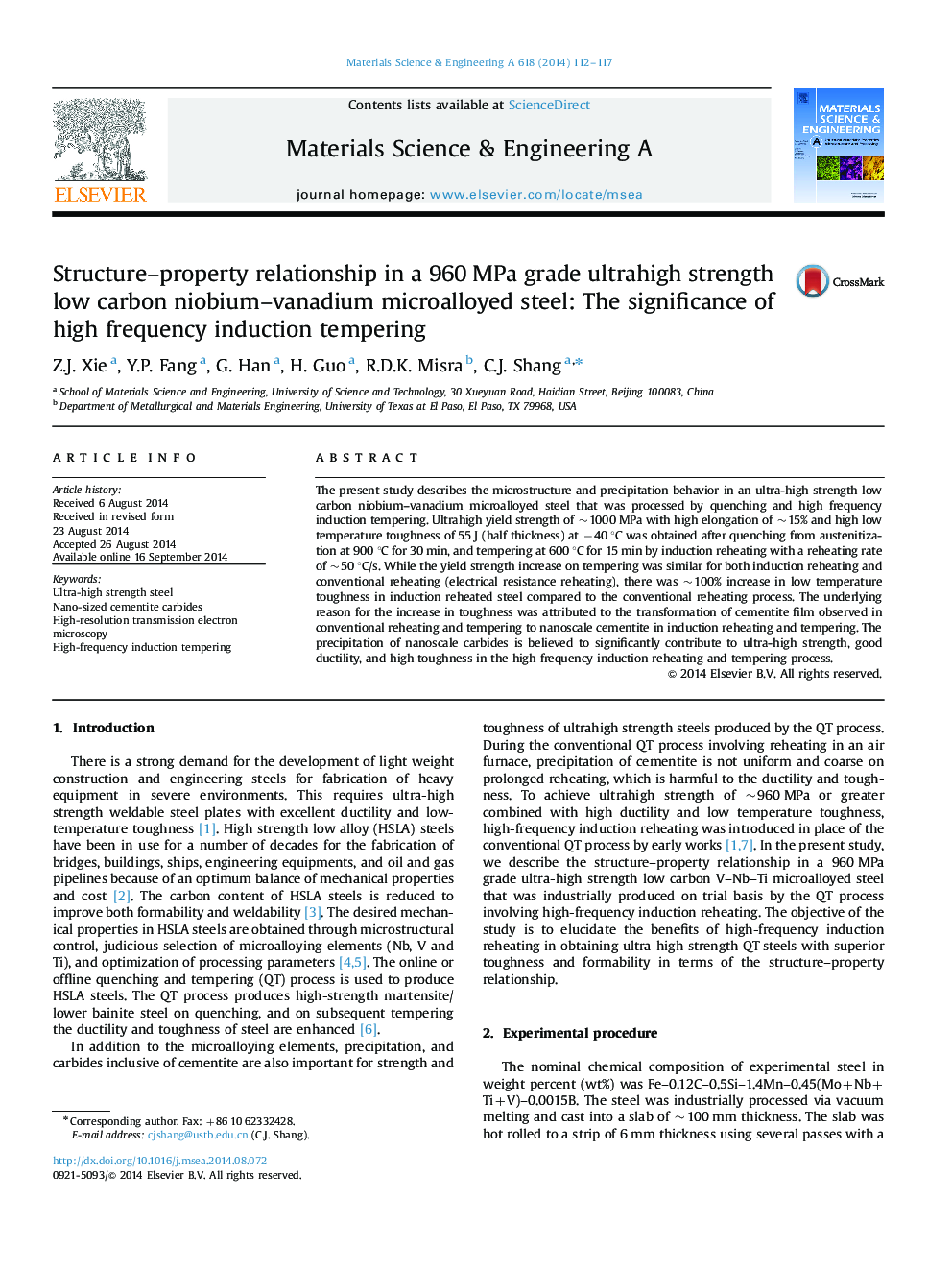| Article ID | Journal | Published Year | Pages | File Type |
|---|---|---|---|---|
| 1574719 | Materials Science and Engineering: A | 2014 | 6 Pages |
Abstract
The present study describes the microstructure and precipitation behavior in an ultra-high strength low carbon niobium-vanadium microalloyed steel that was processed by quenching and high frequency induction tempering. Ultrahigh yield strength of ~1000 MPa with high elongation of ~15% and high low temperature toughness of 55 J (half thickness) at â40 °C was obtained after quenching from austenitization at 900 °C for 30 min, and tempering at 600 °C for 15 min by induction reheating with a reheating rate of ~50 °C/s. While the yield strength increase on tempering was similar for both induction reheating and conventional reheating (electrical resistance reheating), there was ~100% increase in low temperature toughness in induction reheated steel compared to the conventional reheating process. The underlying reason for the increase in toughness was attributed to the transformation of cementite film observed in conventional reheating and tempering to nanoscale cementite in induction reheating and tempering. The precipitation of nanoscale carbides is believed to significantly contribute to ultra-high strength, good ductility, and high toughness in the high frequency induction reheating and tempering process.
Related Topics
Physical Sciences and Engineering
Materials Science
Materials Science (General)
Authors
Z.J. Xie, Y.P. Fang, G. Han, H. Guo, R.D.K. Misra, C.J. Shang,
